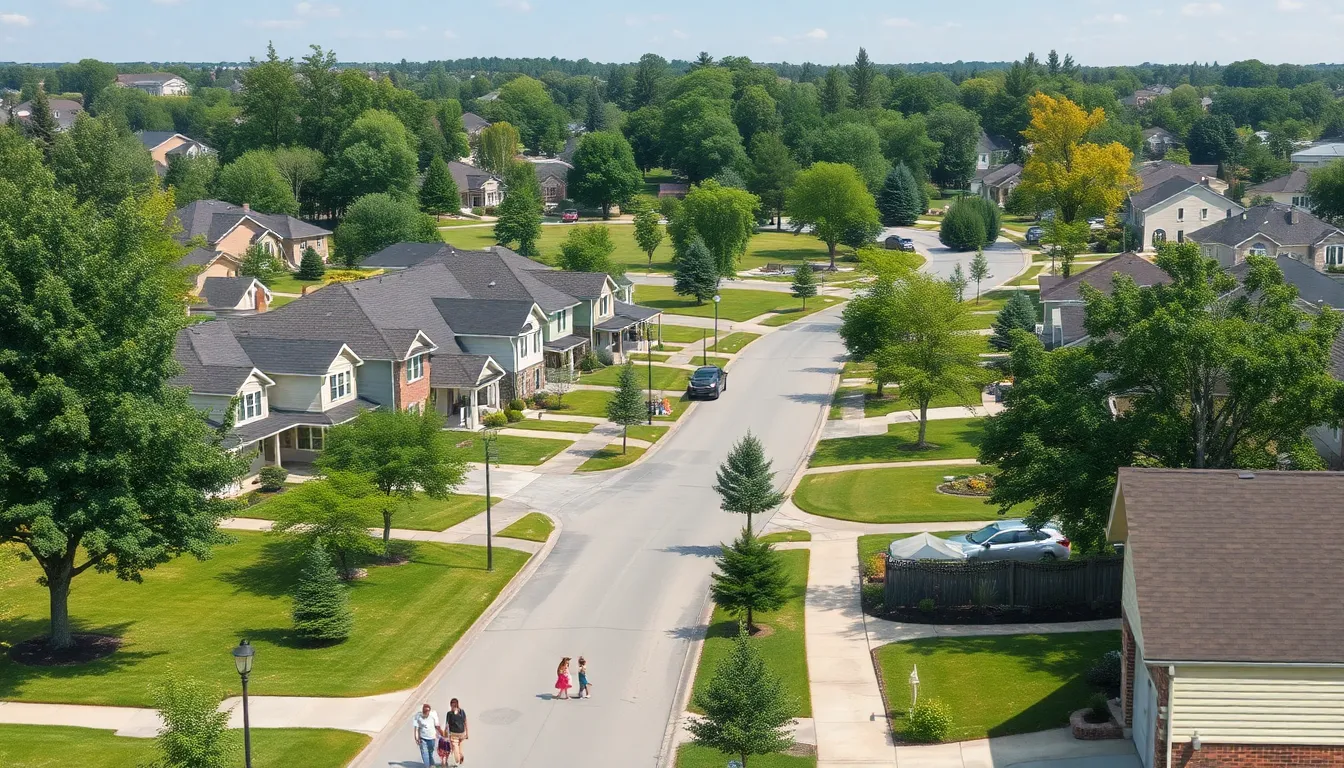When it comes to real estate, understanding property value drivers is like knowing the secret sauce to a perfect burger. It’s not just about the location—though that’s a biggie. Factors like market trends, neighborhood amenities, and even the number of pizza places nearby can make or break a property’s worth.
Table of Contents
ToggleUnderstanding Property Value Drivers
Property value drivers are the key factors influencing a property’s worth in the real estate market. Recognizing these elements enables informed decision-making for buyers, sellers, and investors.
Definition of Property Value Drivers
Property value drivers encompass various aspects that affect a property’s price. Market trends reflect buyer demand and can influence pricing strategies. Location plays a pivotal role, with proximity to schools, shopping, and public transportation significantly impacting values. Neighborhood amenities such as parks, recreational areas, and community services enhance desirability. Local businesses, including restaurants and shops, contribute to a vibrant neighborhood atmosphere, further elevating property appeal. Overall, these components shape how properties are valued.
Importance in Real Estate
Understanding property value drivers proves essential for anyone involved in real estate transactions. Buyers benefit from recognizing which features yield better investment returns. Sellers can effectively market homes by highlighting desirable characteristics. Investors can make calculated risks based on trends and area developments. A strong grasp of these drivers enables stakeholders to navigate the complexities of the market effectively. Focusing on these elements fosters better investment strategies and improved property assessments, ensuring success in real estate endeavors.
Key Factors Influencing Property Values

Understanding the key factors influencing property values is crucial for stakeholders in real estate. These elements drive price fluctuations and inform decision-making in property transactions.
Location and Neighborhood
Location serves as a primary determinant of property value. Proximity to essential services like schools, hospitals, and public transport significantly enhances desirability. Additionally, neighborhoods with low crime rates and strong community engagement often attract buyers. Properties in high-demand cities typically command higher prices due to urban amenities and opportunities. Well-maintained parks and recreational areas within neighborhoods create appealing living environments too. Ultimately, the overall vibe and development potential of the area shape property values.
Property Condition and Maintenance
The condition of a property plays a vital role in its valuation. Well-maintained properties attract more buyers and command premium prices. Visible signs of neglect, such as peeling paint or broken fixtures, negatively impact perceived value. Regular maintenance, including landscaping and repairs, preserves appeal and functional integrity. Additionally, renovations and upgrades often yield significant returns on investment, boosting property values. Buyers tend to prefer homes that require minimal immediate repairs, enhancing demand in such cases.
Economic Conditions
Economic conditions influence property values through employment rates and overall market health. When local economies thrive, increased employment leads to greater buyer confidence and demand. During economic downturns, reduced job security can depress property values as potential buyers hesitate. Interest rates also play a critical role; lower rates generally encourage borrowing and purchasing activities. Furthermore, demographic trends, such as population growth in certain areas, can elevate demand and consequently affect property prices. Economic fluctuations create a dynamic environment that property investors must analyze.
Impact of Market Trends
Market trends significantly influence property values, shaping buyer expectations and investment opportunities. Understanding these dynamics helps stakeholders make informed decisions.
Supply and Demand Dynamics
Supply and demand dictate property values within real estate markets. High demand coupled with limited inventory tends to drive prices up. Conversely, when supply exceeds demand, property values often decline. Indicators like population growth and urban development highlight market health. Awareness of local housing trends equips buyers and sellers to act strategically. Analyzing data on new construction and housing availability provides valuable insight. Successful investors monitor these shifts to capitalize on favorable conditions.
Interest Rates and Financing Options
Interest rates directly affect purchasing power and affordability. Lower interest rates generally enhance buyer confidence, leading to increased demand for properties. Higher rates may deter prospective buyers, limiting their purchasing capabilities. Understanding financing options can empower investors and homeowners alike. Various loan programs provide diverse paths to homeownership. Conventional loans, FHA loans, and VA loans each offer unique benefits. Monitoring interest rate trends allows stakeholders to strategize effectively. Awareness of how these rates relate to market conditions ensures informed decision-making.
The Role of Property Features
Property features significantly impact the overall value of real estate. Critical elements include size, layout, upgrades, and renovations.
Size and Layout
Size and layout contribute greatly to buyers’ perceptions. Larger properties generally command higher prices, as they offer more space for families. An open floor plan enhances functionality, making homes more desirable. Efficient layouts optimize space, appealing to buyers looking for comfortable living environments. Additionally, properties with multiple bedrooms and bathrooms often attract families seeking convenience. Customization options also increase attractiveness, allowing buyers to envision personal touches. Overall, size and layout remain key considerations influencing property value.
Upgrades and Renovations
Upgrades and renovations enhance a property’s appeal. Modern kitchens and bathrooms frequently lead to increased buyer interest. High-quality finishes and energy-efficient appliances attract environmentally conscious buyers. Outdoor spaces such as decks or landscaped yards often add significant value. Renovated homes reduce immediate repair costs, making them more appealing to potential buyers. Smart home technologies are increasingly sought-after, reflecting current trends. Properties showcasing contemporary features typically achieve higher market prices, reinforcing the importance of strategic upgrades.
Understanding property value drivers is crucial for anyone involved in real estate. By recognizing the interplay between location, market trends, and property features, stakeholders can make informed decisions that enhance their investment strategies.
The nuances of buyer demand, economic conditions, and property maintenance cannot be overlooked. As the market evolves, staying attuned to these factors will empower buyers, sellers, and investors alike.
Ultimately, a comprehensive grasp of what influences property values fosters better assessments and more successful outcomes in the real estate landscape.





